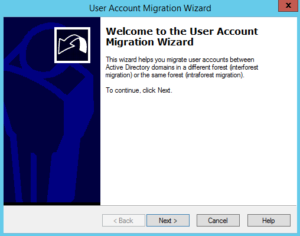

- ADMT 3.2 NOT INSTALLING ON WINDOWS 2008 INSTALL
- ADMT 3.2 NOT INSTALLING ON WINDOWS 2008 UPDATE
- ADMT 3.2 NOT INSTALLING ON WINDOWS 2008 WINDOWS 7
- ADMT 3.2 NOT INSTALLING ON WINDOWS 2008 SERIES
It’s available in the same languages as mentioned above. The 263-page Active Directory Migration Tool (ADMT) Guide: Migrating and Restructuring Active Directory Domains for use with version 3.2 is available here. It’s available in English, Chinese (Simplified and Traditional), French, German, Japanese, Portuguese (Brazil), and Spanish. Now, almost a year after Windows Server 2008 R2 RTM'ed and a little over a year since Microsoft acknowledged the problem, an appropriate version of the Active Directory Migration Tool is available: version 3.2 supports Windows Server 2008 R2 in all scenarios. ADMT 3.1 does not support installation on Windows Server 2008 R2 or an Active Directory domain containing Windows Server 2008 R2 Domain Controller as its source domain. The challenge was no suitable version of the Active Directory Migration Toolkit (ADMT) was available to support some of these scenarios. Much needed functionality in their line of business, where mergers, acquisitions and divestitures occur often or even are their line of business. One thing that stood in their way was the inability to restructure Active Directory domains and forests. With a slew of new Active Directory features, the newest incarnation of Windows Server was appealing to many customers. Hope this helps, please stay tuned for the next part.Windows Server 2008 R2 was released on October 22nd 2009.
ADMT 3.2 NOT INSTALLING ON WINDOWS 2008 UPDATE
Update Junes 2014 – ADMT 3.2 now supports Windows Server 2012 / 2012 R2. If you need to migration a Server 2000 Domain, you will need to use ADMT version 3.1 or earlier. Use ADMT 3.1 for installation on a Server 2008 non-R2 server, or ADMT 3.0 for Server 2003.
ADMT 3.2 NOT INSTALLING ON WINDOWS 2008 SERIES
!33497&authkey=!AF3kLtU8fl2_B0I&ithint=file%2cexeįor this series I will be using ADMT 3.2, which is the supported version for Server 2008 R2. Set a SQL administrator, choose the user account you plan to run ADMT under- be aware that this user account will need to have local administrative rights in the source domain (this will be discussed further in the series). Set an account for the SQL service to run under (use your ADMT Service Account). The issue does affect Win2008 R2 and is only fixed by the cumulative update.īefore installing SQL Server Express 2008 with SP1 (which will fail), first install:Ĭumulative update package 4 for SQL Server 2008
ADMT 3.2 NOT INSTALLING ON WINDOWS 2008 WINDOWS 7
Unhelpfully, this error is identified in KB975055 as being only for Windows 7 and that it was fixed by SP1 - both incorrect. The issue is fixed in "Cumulative update package 4 for SQL Server 2008". This error is purely within SQL Express 2008 and is not really to do with ADMT 3.2.
ADMT 3.2 NOT INSTALLING ON WINDOWS 2008 INSTALL
Use the ADMT service account explained in the previous post to install SQL and ADMT.ĪDMT requires a preconfigured instance of SQL Server for its underlying data store, so we’ll go ahead and install SQL 2008 SP1 Express on You should install ADMT and SQL onto a member server in the destination forest. In the source domain add the same user to the builtin administrators group (you will be unable to add it to the domain administrators group). It is recommended that you make the user account in the destination domain and make it a member of the domain administrators group.

This is the account we will use for the entire migration. I will create a user called ADMT and assign this user the correct permissions. You may decide to create a user specifically for the ADMT Migration, or you may use an existing user e.g. The account you run ADMT under will need to have administrative rights in both the source and destination domain.


 0 kommentar(er)
0 kommentar(er)
